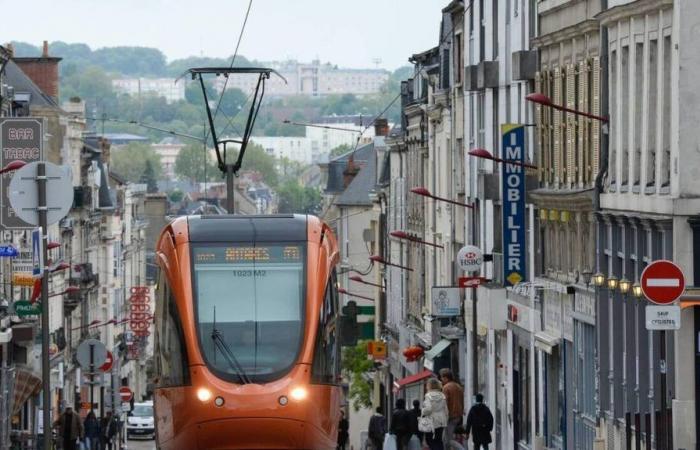Maintenance problems, sudden braking, road hazards: the causes of accidents in public transport are multiple. On March 1, 2024, the collision between a car and a TCL tram left six people injured in Lyon (69). Two of the victims were on the tram. On April 6, a bus from the Val d’Yerres Val de Seine network crashed into a tree in Paris. A passenger and the driver, who had fallen asleep at the wheel, were seriously injured. In short, if the volume of the vehicle may suggest that the impact will be light, this is not the case. But then, if I am the victim of an accident on board public transport, can I be compensated and how?
The answer is largely found in the Badinter law of July 5, 1985 aimed at improving the situation of victims of traffic accidents and speeding up compensation procedures. It concerns victims of car, motorcycle and scooter accidents, of course, but also of coaches, buses and trams. The question to ask is: is the user at fault or a victim? Ouest-France answers you.
The user is at fault
This case is less recurrent, but it nonetheless remains non-existent. According to article 5 of the law cited above, “the fault committed by the victim has the effect of limiting or excluding compensation for the damage to property that he has suffered”. This exclusion of compensation applies if the victim “was the exclusive cause of the accident”. For example, the passenger could be criticized for having distracted the driver by talking to him, or for not having respected certain safety instructions. The Nice metropolis Lignes d’Azur network stipulates, for example, in its 2023 general regulations that “travelers are required to ensure their own safety and not commit any actions, clumsiness, imprudence, inattention or negligence likely to cause accidents. In particular, they must hold on to handles, handrails, access or support bars. When possible, it is recommended to sit down.” The companies are therefore calling on their users to exercise caution. For its part, the TCL network (Lyon metropolis), reminds that for the safety of everyone, “access to rollerblades, scooters, skateboards, self-balancing scooters or similar devices is not authorized on the TCL network” except in special situations: in funiculars, on tram lines, at certain times… On many networks, in coaches, wearing a seat belt is compulsory.
Compensation may be considered in certain cases. “Supplies and devices issued on medical prescription give rise to compensation according to the rules applicable to compensation for personal injury”also indicates the Badinter law.
Read also: “An unacceptable situation”: in Quimper, they recount their misadventures with FlixBus
The user is a victim
This case is the most common. On networks as on the Internet, testimonials are commonplace. On X (formerly Twitter), a user reacts to the launch of a petition to demand a change to 30 km/h in all cities in France: “For buses too? Because drivers who press the pedal 10m before stopping and then brake to death, raf kids, old people, disabled people: FUCK UP! » Another, on the 25th: “I got up on the bus to give my seat to a grandpa. I stood up. The bus brakes. I can’t stop myself from falling. I fall like a cosmic sack of potatoes onto another grandpa. Even older and more fragile. AND DAMN. I BROKE IT. » Or the 28th: “SHAME the bus braked and I fell with all my weight on a girl… she totally screamed.” Same fight elsewhere, notably on victim support platforms.
So what about compensation? The Badinter law provides for systematic compensation for bodily injury to the user as long as he or she is not solely liable. If drivers and other passengers react at the time, public transport companies generally offer support after the fact. Frequently asked questions, to be redirected; claim forms; appropriate email addresses and phone numbers: Options vary from network to network. The report often goes first through the driver, then customer or accident service. The Star network, for example, which serves the Rennes metropolis, has an online form. For Bibus (Brest metropolis), users are invited to contact the accident service by telephone.
Such easy compensation?
Unfortunately, theory clashes with reality and the conditions are not always met to effectively ensure compensation. Several testimonies are shared on the website of the association to help compensate victims of France (AIVF): “I have no news from the bus company despite my report and my connections,” “At the time, I tried (in vain) to contact the bus services, but they only sent me from one service to another. »
The procedure can be long and tedious. The rule provides that the victim user receives within six weeks from the company’s insurer a form in which he is invited to detail the facts supporting his file of evidence: medical certificate, work stoppages, reports … Compensation is determined once the victim’s state of health has improved. Hear here an observation by a medical advisor of the stabilization of the state of health, without risk of improvement or deterioration in the short term. The professional then lists the consequences of the accident on the victim’s person.
While awaiting compensation, the insurer has 8 months to provide financial provision to the victim. This provision is intended to cover the costs incurred following the accident and the financial difficulties resulting from it (loss of employment, for example). This provision will be deducted from the final amount of compensation. Finally, victims are advised to be accompanied by a specialized lawyer who can support them throughout the compensation process.






